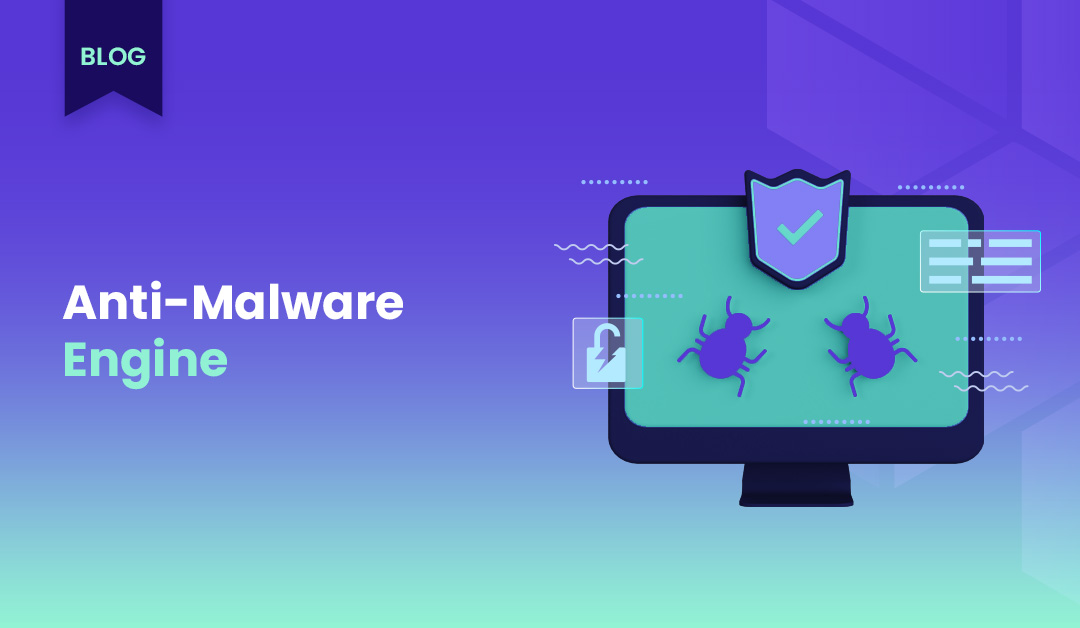What is Anti-Malware Engine?
What is Anti-Malware Engine? Anti-Malware Engine is a core component of a cybersecurity system that aims to detect, quarantine, and remove malicious software, also known as malware. The engine leverages a combination of sophisticated techniques such as heuristic analysis, signature-based detection, and behavior-based detection to ward off threats and ensure a secured digital environment. Definition of […]
Author
Date
Category
All Categories
- AI-powered security
- Attacks & Threats
- Cybersecurity
- Hybrid Cloud
- Network
- Network Firewall
- Network Protection
- News
- Remote Workforce
- Security
- Zero Trust
Contents
Popular Posts
Product
Join the Newsletter

What is Anti-Malware Engine?
Anti-Malware Engine is a core component of a cybersecurity system that aims to detect, quarantine, and remove malicious software, also known as malware. The engine leverages a combination of sophisticated techniques such as heuristic analysis, signature-based detection, and behavior-based detection to ward off threats and ensure a secured digital environment.
Definition of Anti-Malware Engine
An Anti-Malware Engine is an essential part of most advanced threat prevention solutions. It is a complex system designed to identify, isolate, and neutralize malware threats. It uses a variety of detection methods, including monitoring for unusual behavior, matching against known malicious code signatures, and identifying suspicious file characteristics.
Key Components of Anti-Malware Engines
The Anti-Malware Engine consists of several components, each playing a vital role in the threat prevention process.
- Signature Database
This is a comprehensive list of known malware signatures that the engine uses to identify threats. When a file or program matches a signature in the database, it is flagged as potentially malicious. - Heuristic Analyzer
This component uses algorithms and rules to identify abnormal behavior or characteristics that might indicate the presence of unknown or modified malware. - Sandbox
A safe, isolated environment where suspicious files or programs can be executed without posing a risk to the actual system. This allows the engine to analyze the behavior of the potential threat in detail. - Remediation Tools
These tools are responsible for taking action against identified threats, which may include quarantining or deleting malicious files, and repairing any damage caused to the system. - Update Mechanism
This ensures that the engine’s signature database and heuristic rules are regularly updated with information about the latest threats.
Anti-Malware vs. Antivirus: Unraveling the Differences
While both Anti-Malware and Antivirus programs aim to protect your systems from malicious software, they are not exactly the same. Antivirus software primarily focuses on older, more established threats such as viruses, worms, and Trojans. On the other hand, Anti-Malware software is designed to tackle newer, more complex threats like ransomware and zero-day exploits.
Another significant difference lies in the detection methods. Traditional Antivirus solutions mainly rely on signature-based detection, where they match files against a database of known threats. In contrast, Anti-Malware solutions use more sophisticated methods, including behavior-based detection and heuristic analysis, making them more effective against advanced threats.
However, it’s important to note that these terms are often used interchangeably in the cybersecurity industry, and many modern security solutions combine features of both Anti-Malware and Antivirus.
How Anti-Malware Engines Combat Emerging Threats?
Emerging threats pose a significant challenge to cybersecurity, primarily because they are unknown and hence, difficult to detect. Anti-Malware engines use a variety of techniques to tackle these threats.
Behaviour-Based Detection: This method involves monitoring a program’s behaviour to identify suspicious activities. For instance, a program that tries to modify system files or send data to an unknown server may be flagged as malware.
Heuristic Analysis: This technique involves analyzing the characteristics of a program to determine if it behaves like known malware. It is especially useful in detecting variants of known malware.
Sandboxing: Suspicious programs are run in a virtual environment or ‘sandbox’ to observe their behavior without risking the actual system. This helps in identifying and analyzing new malware.
Artificial Intelligence and Machine Learning: AI and ML algorithms are used to analyze large volumes of data and identify patterns that suggest malicious activities. These techniques are particularly useful in detecting new and evolving threats.
Integration of Anti-Malware Engines in Security Solutions
Anti-Malware engines stand as a critical component within comprehensive cybersecurity solutions. They operate synergistically with other elements such as firewall, intrusion detection systems (IDS), and intrusion prevention systems (IPS) to establish a robust, multilayered defense against various threats.
In the realm of cybersecurity, these solutions seamlessly incorporate Anti-Malware engines to deliver real-time protection. This involves scanning files and programs as they are accessed, enabling the identification and blocking of threats before they can inflict harm. Additionally, cybersecurity solutions utilize the engine for comprehensive system scans, meticulously checking every file and program on a system for potential malware.
Moreover, these security solutions harness the remediation tools offered by the engine to proactively address threats. This involves isolating infected files or systems to curtail the spread of malware and initiating repairs to rectify any damage caused. The integration of Anti-Malware engines into cybersecurity solutions enhances the overall resilience and responsiveness of the security infrastructure.
Threat Prevention: The Need for Robust Anti-Malware Solutions
Threat prevention is a crucial aspect of cybersecurity. As cyber threats continue to evolve and become more sophisticated, the need for robust Anti-Malware solutions has never been greater.
Preventing Ransomware
Ransomware is a type of malware that encrypts a user’s data and demands a ransom in exchange for the decryption key. It is one of the most destructive forms of malware, causing significant disruption and financial loss. Anti-Malware solutions play a crucial role in preventing ransomware attacks by detecting and blocking ransomware before it can encrypt data.
Role of Anti-Malware in Cyber Attack Detection
Anti-Malware solutions are crucial tools for detecting cyber attacks. They monitor systems and networks for suspicious activity, flagging potential threats for further investigation. By leveraging advanced techniques such as behavior-based detection and heuristic analysis, Anti-Malware solutions can identify even the most sophisticated attacks, including those that traditional antivirus software might miss.
Deploying AI-Driven Threat Detection
Artificial Intelligence (AI) and Machine Learning (ML) are increasingly being used in threat detection. By analyzing large volumes of data and identifying patterns, AI and ML algorithms can detect anomalies that may indicate a cyber attack. This allows for quicker detection and response, minimizing the potential impact of an attack.
The Importance of Malware File Blocking
Malware file blocking is a key feature of Anti-Malware solutions. It involves preventing the execution of malicious files, stopping malware in its tracks. This not only protects systems and data from harm but also helps to contain the spread of malware within a network.
Reducing Ransomware Risks with Anti-Malware Solutions
Anti-Malware solutions are an effective tool for reducing the risk of ransomware attacks. They can prevent ransomware from infiltrating systems, detect ransomware activity, and block the communication channels that ransomware uses to send encryption keys to attackers. Additionally, many solutions also include features to recover encrypted files, mitigating the damage caused by a successful ransomware attack.
In Conclusion: The Significance of Anti-Malware Engines
The rising threat of cybercrime accentuates the necessity for resilient anti-malware engines in safeguarding digital assets. By integrating these engines into comprehensive security solutions that encompass firewalls, organizations can fortify their defenses, detect emerging threats promptly, and respond effectively to mitigate potential damage.
In an increasingly interconnected world, where vulnerabilities may be exploited through social engineering, the role of anti-malware engines, alongside robust network security measures, becomes paramount in addressing cybersecurity challenges. This comprehensive approach helps organizations stay resilient against malware attacks and aligns with effective threat models to manage cyber risk proactively.
Get Started with Timus
Zero Trust. Adaptive Cloud Firewall. Secure Remote Access. In one.
